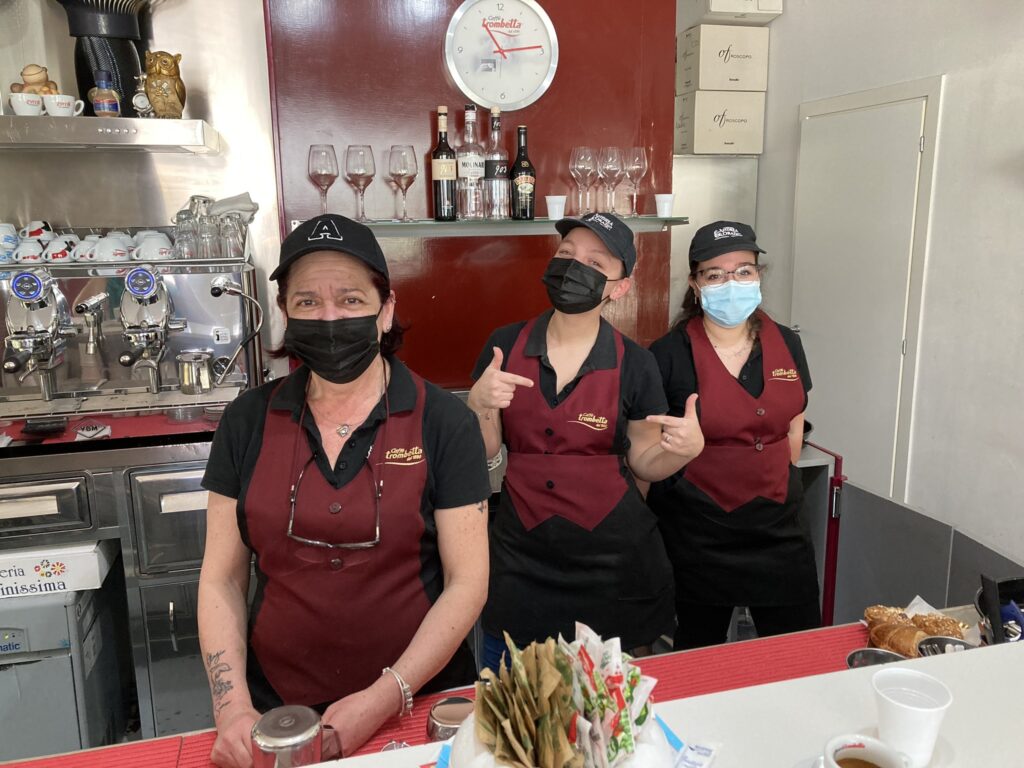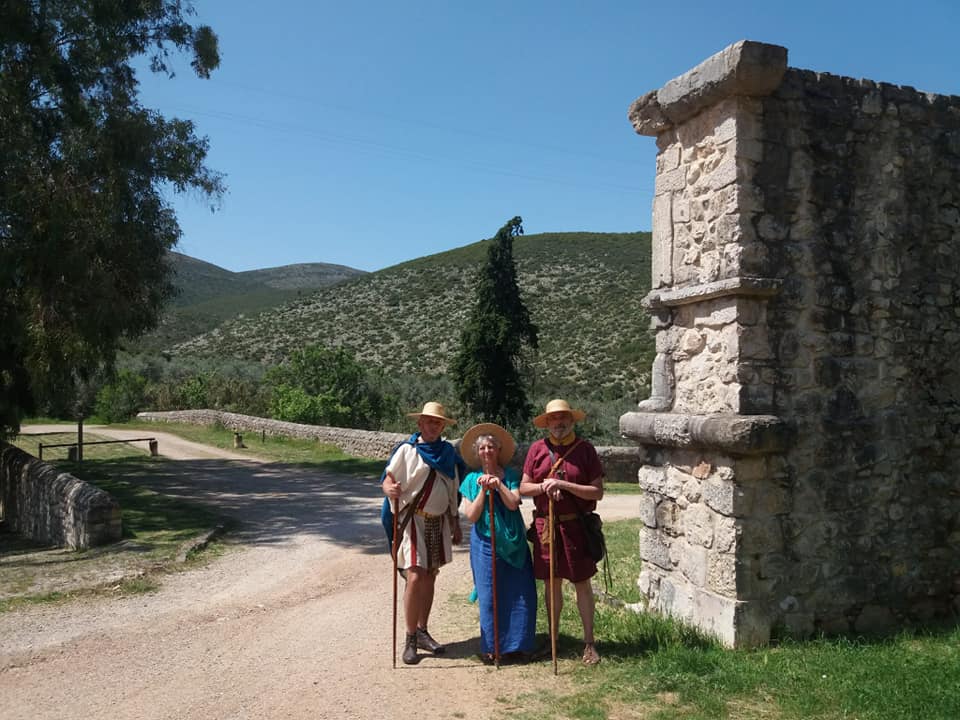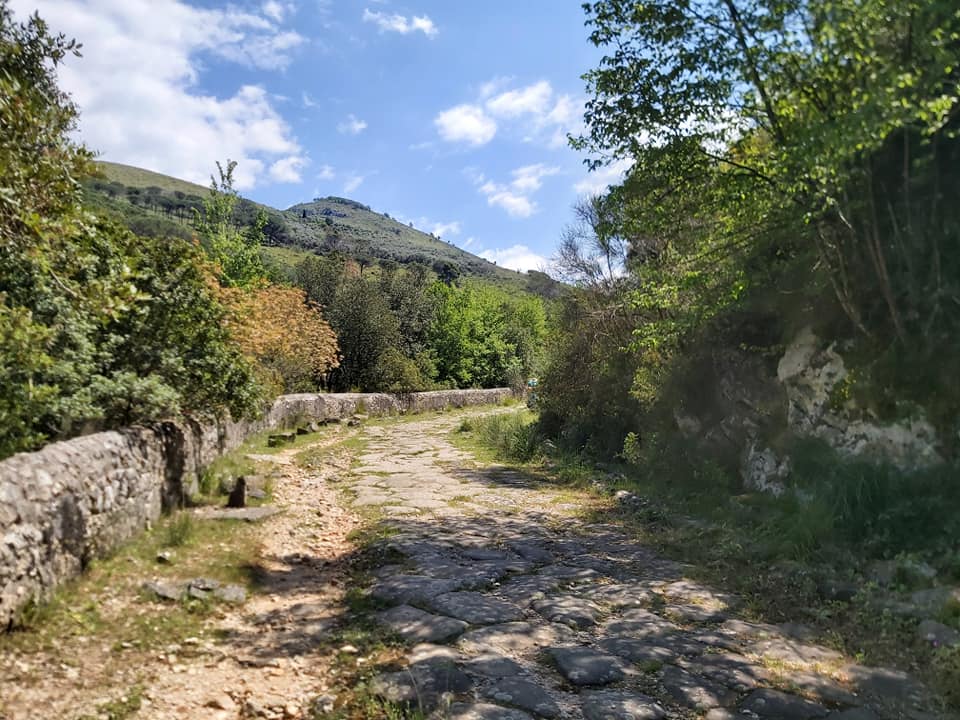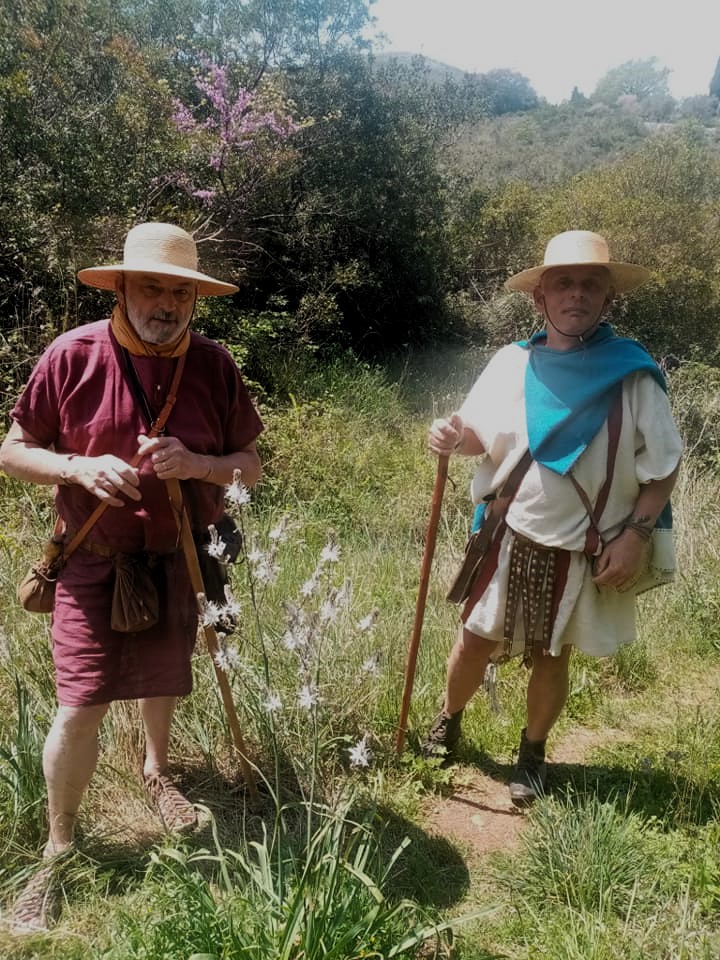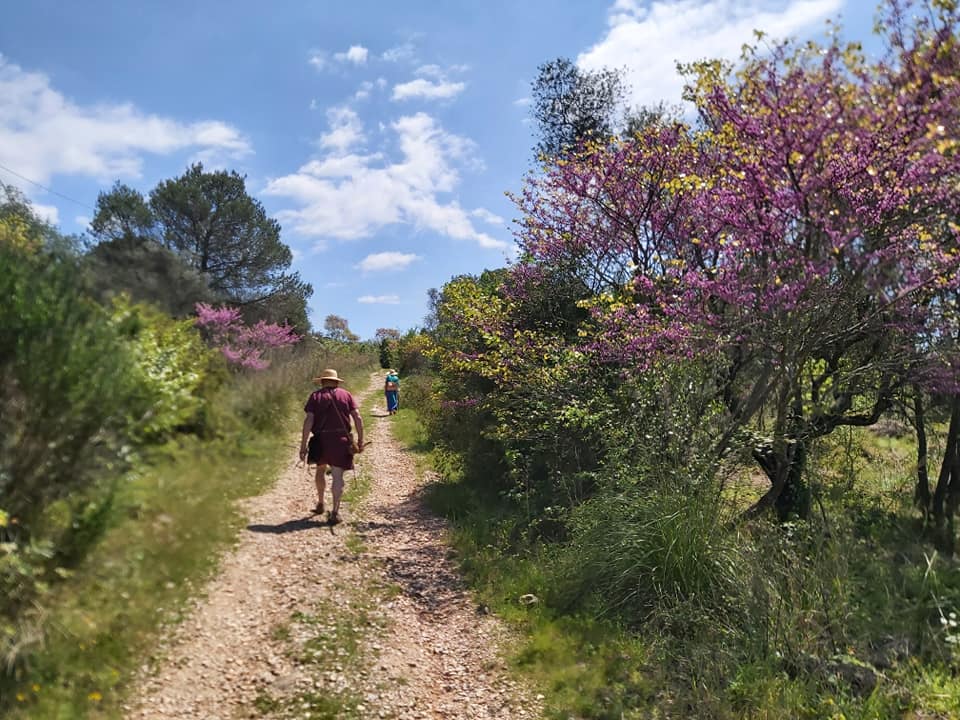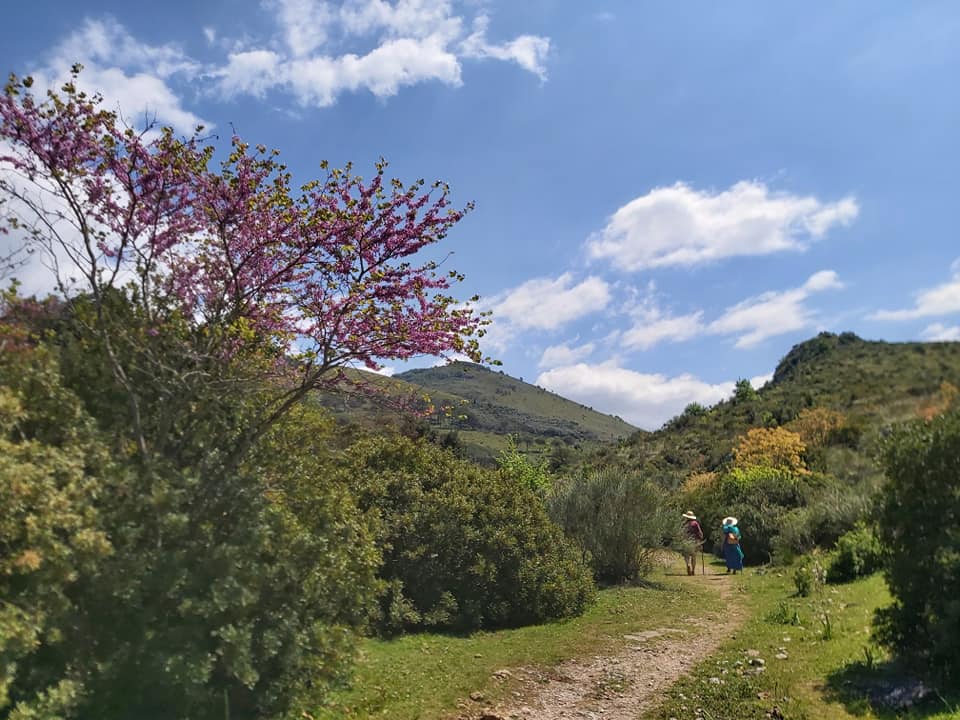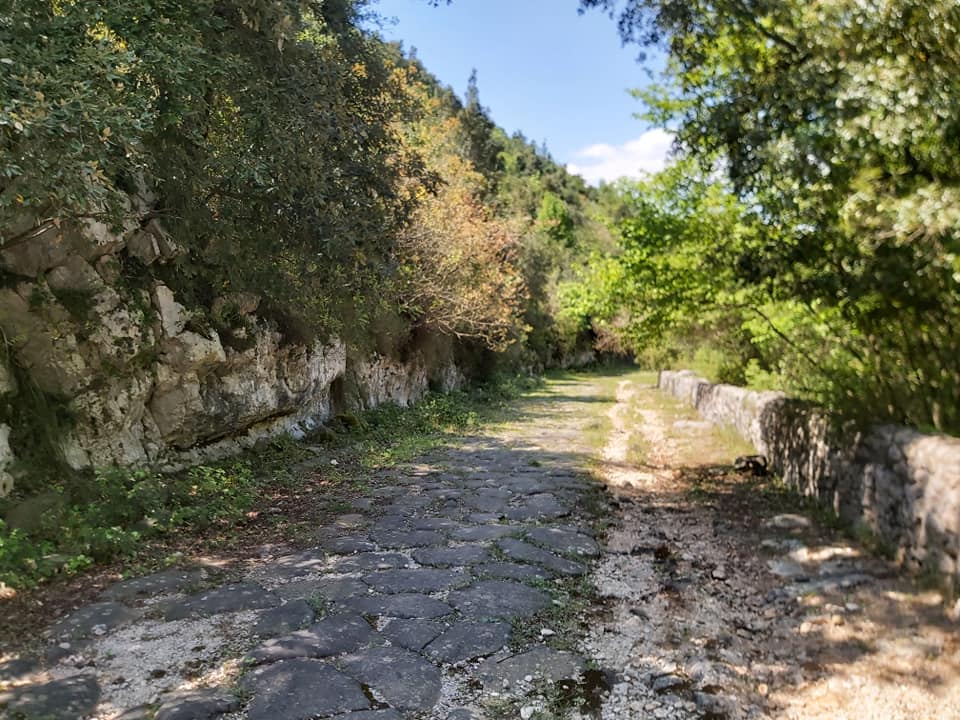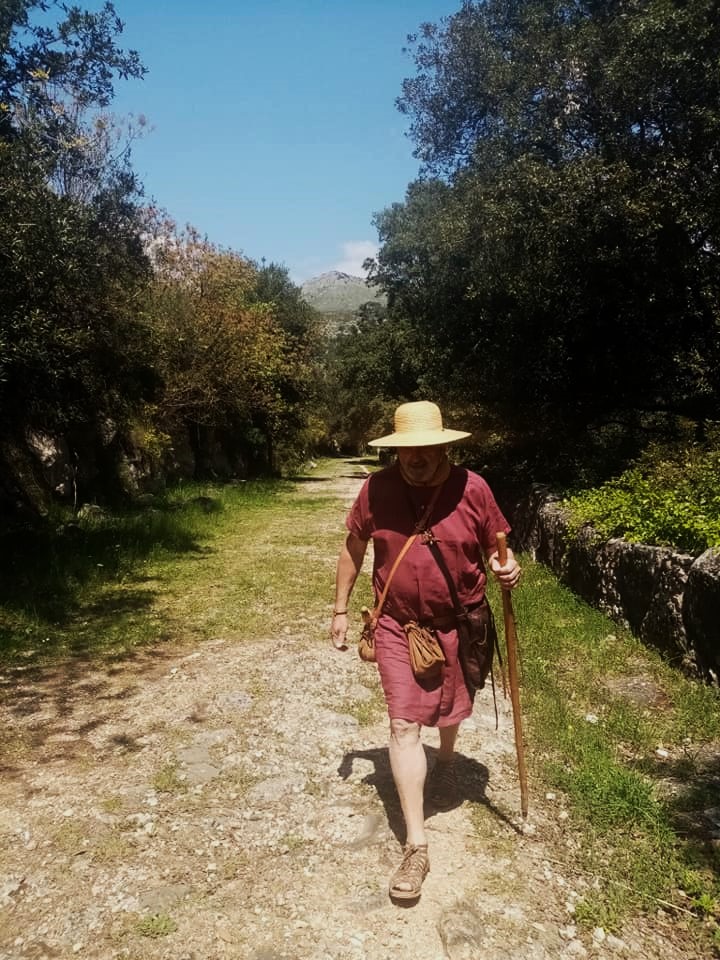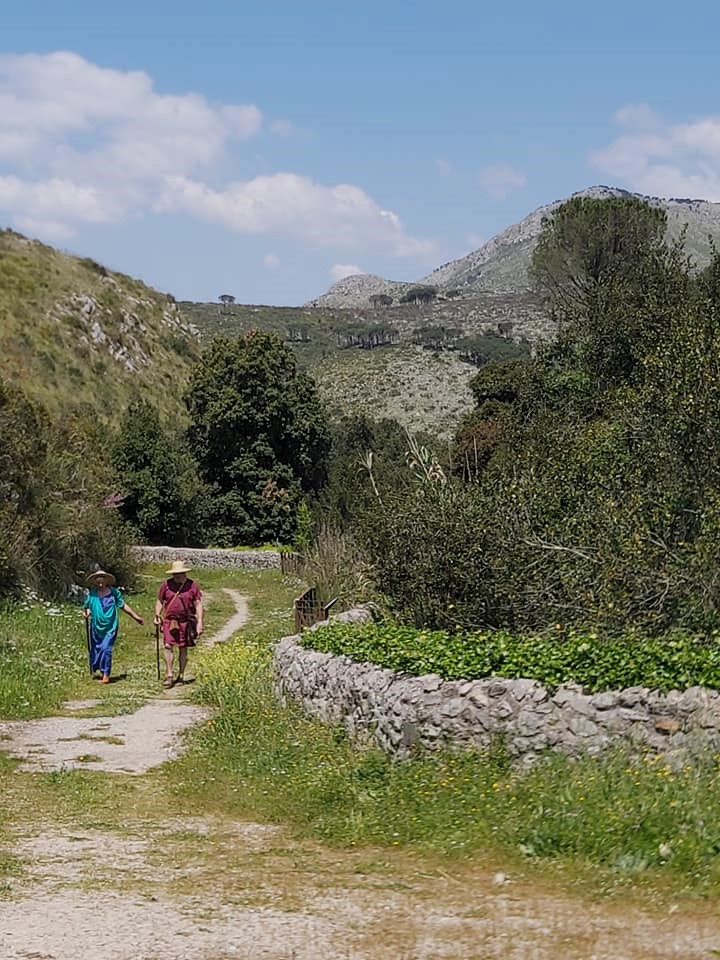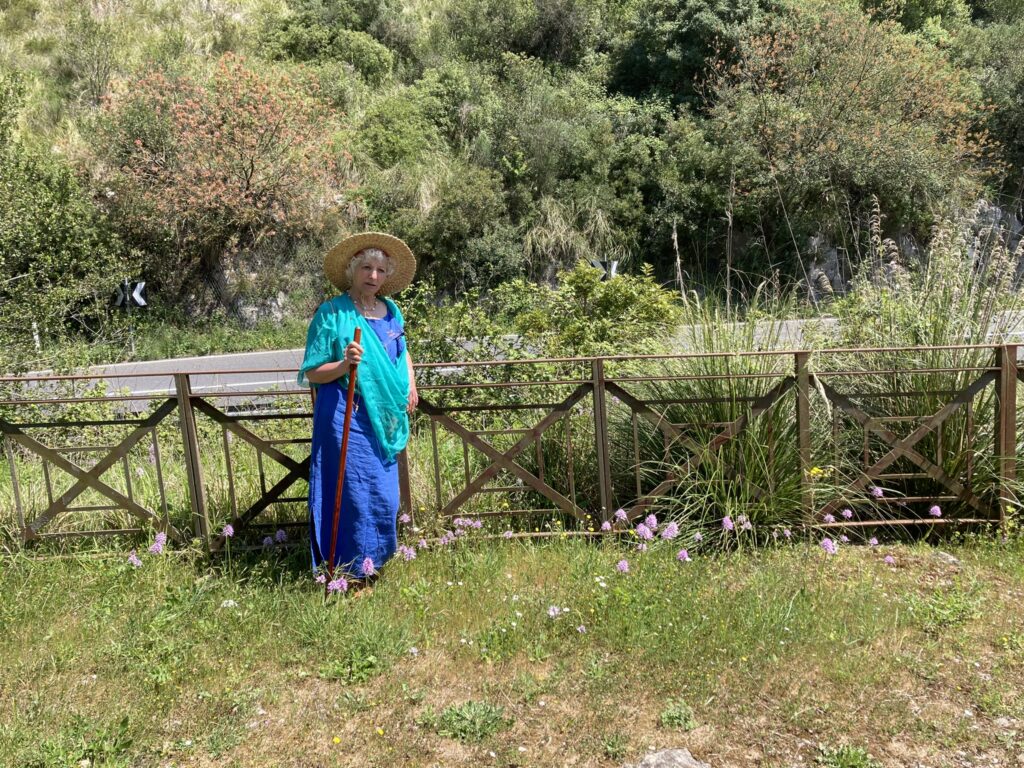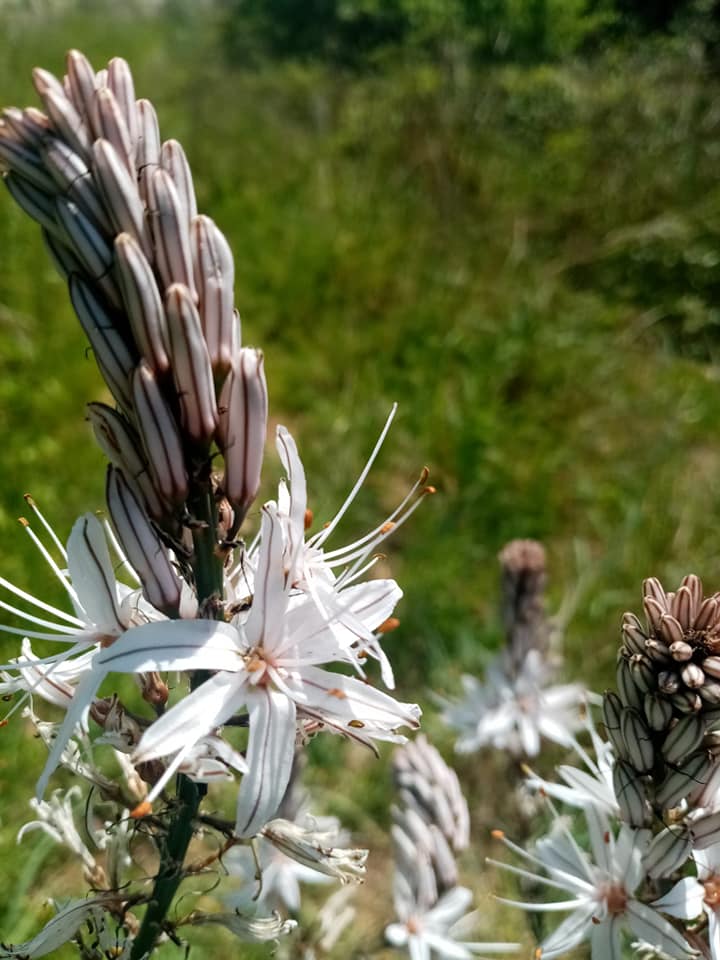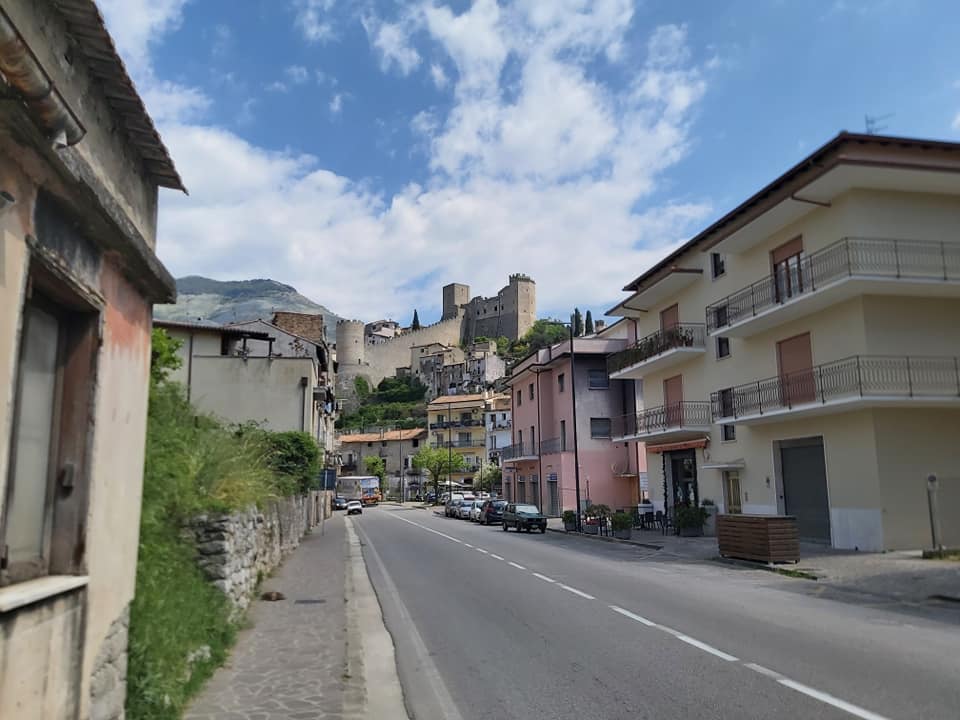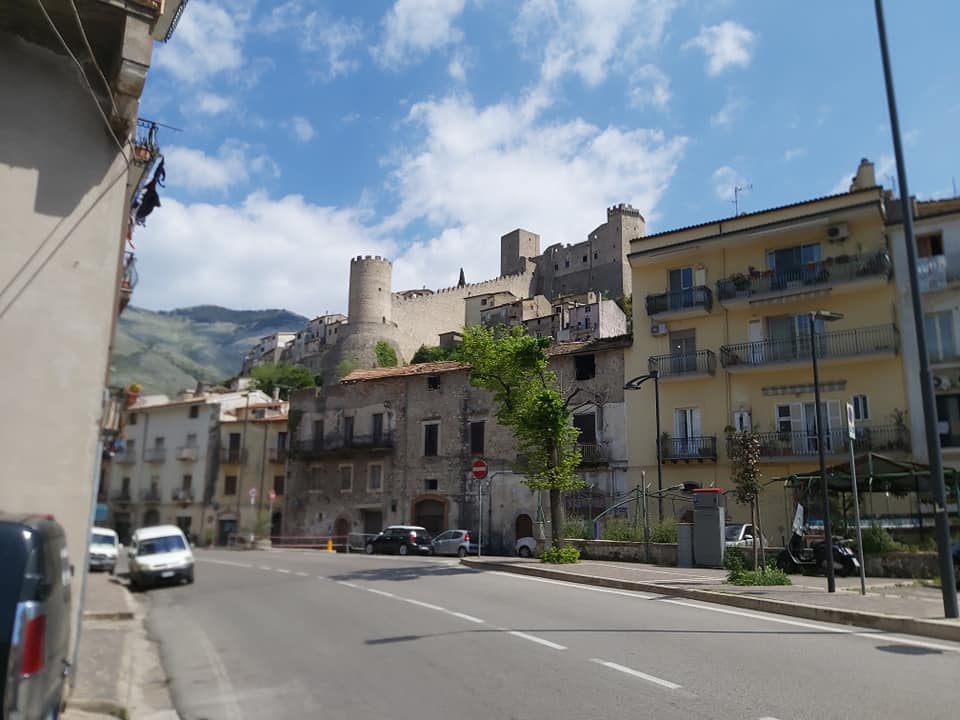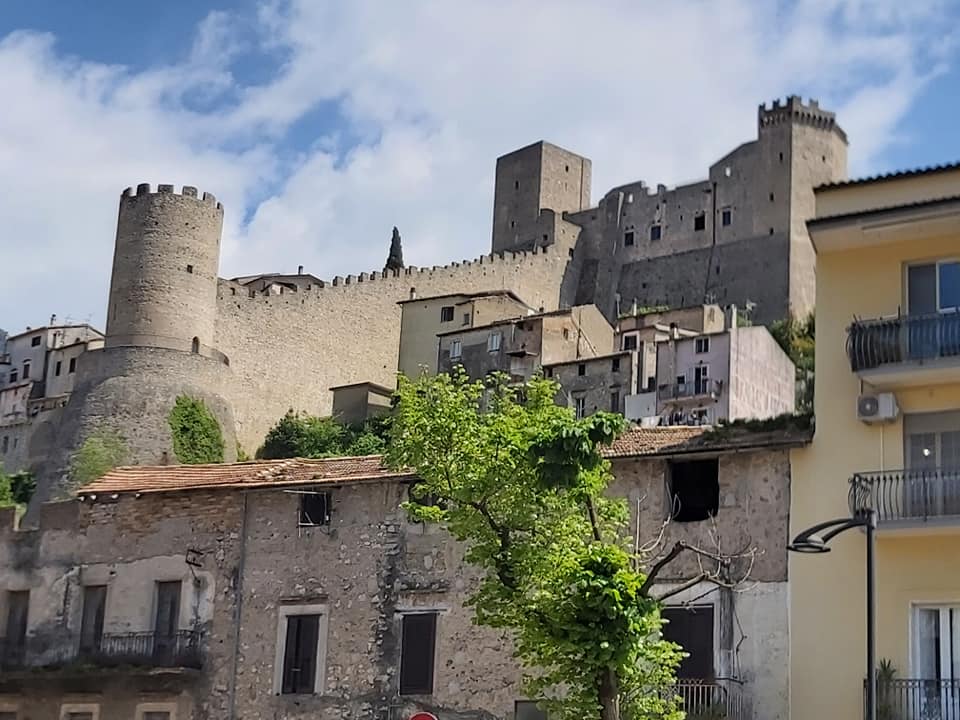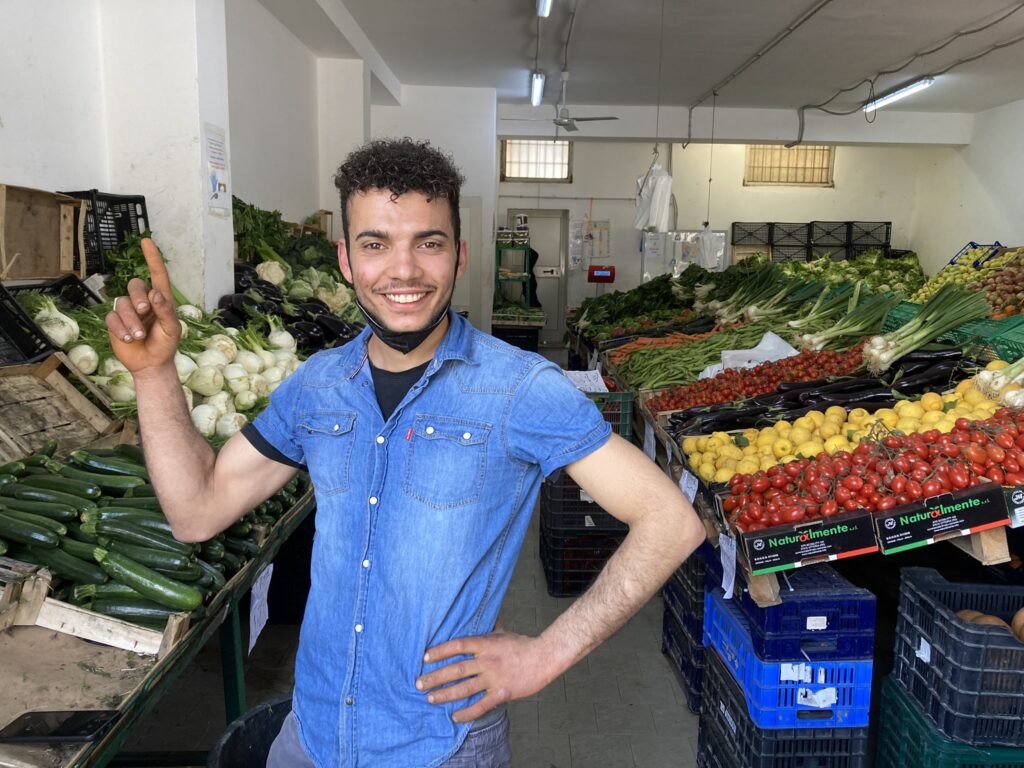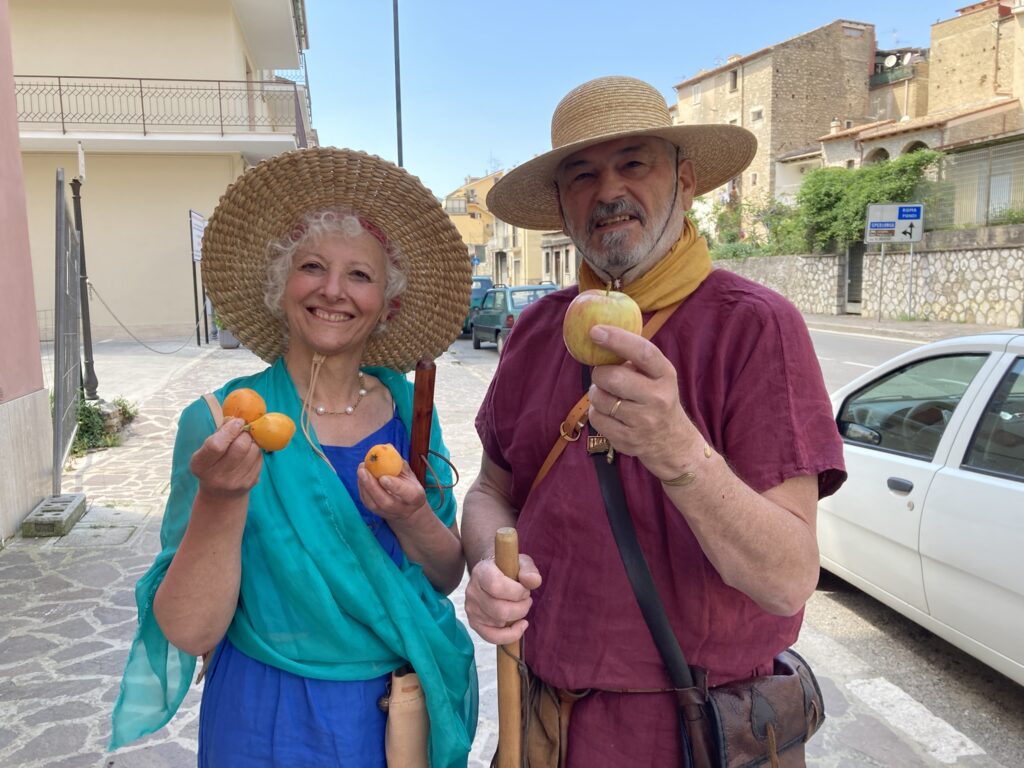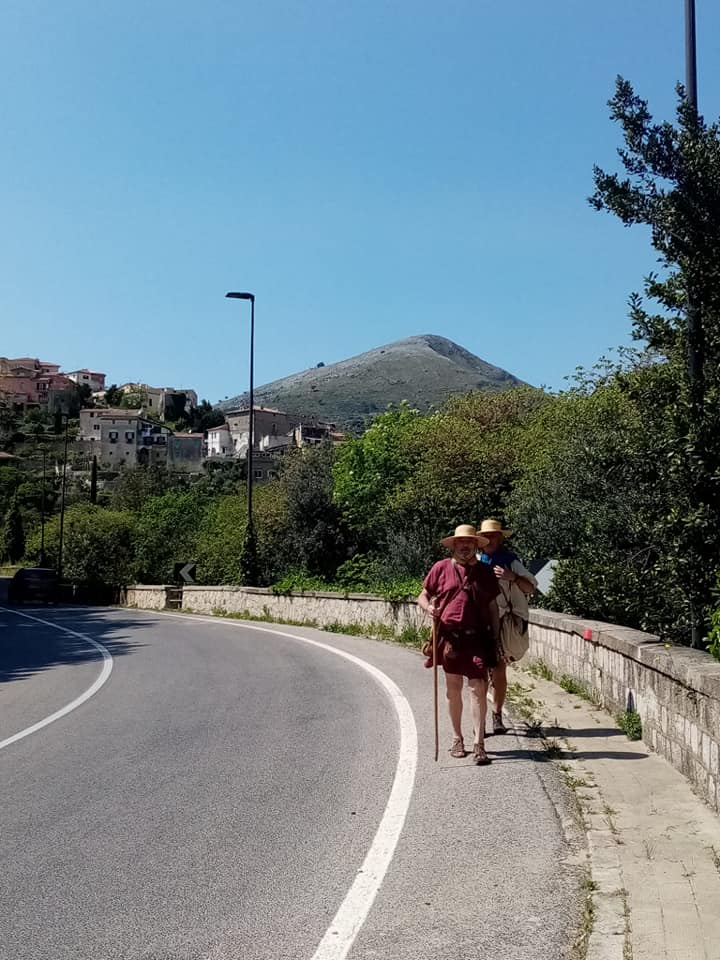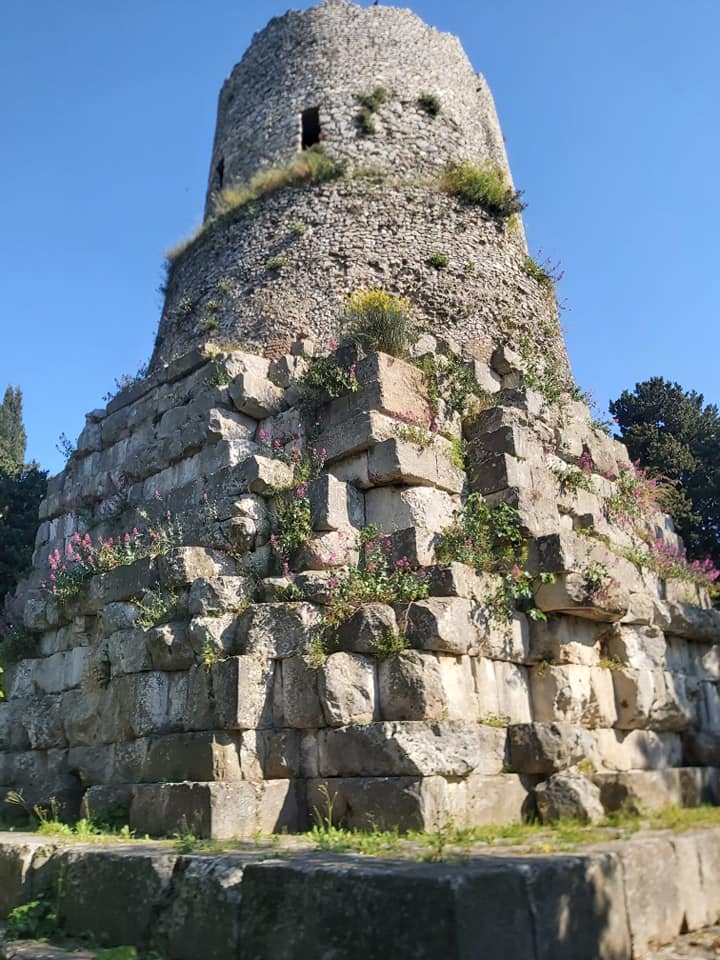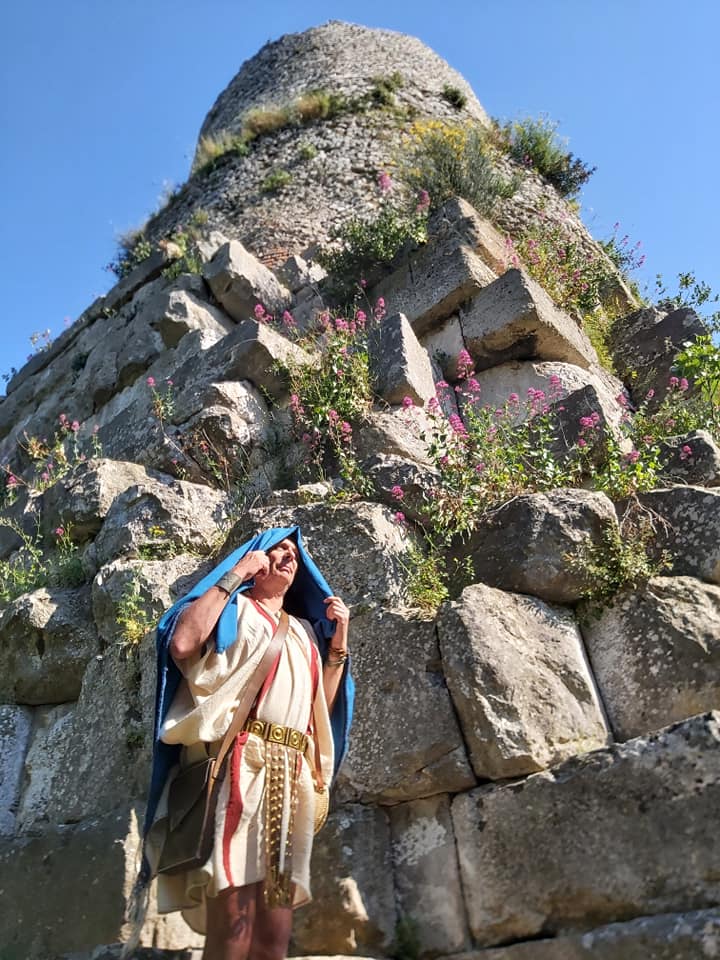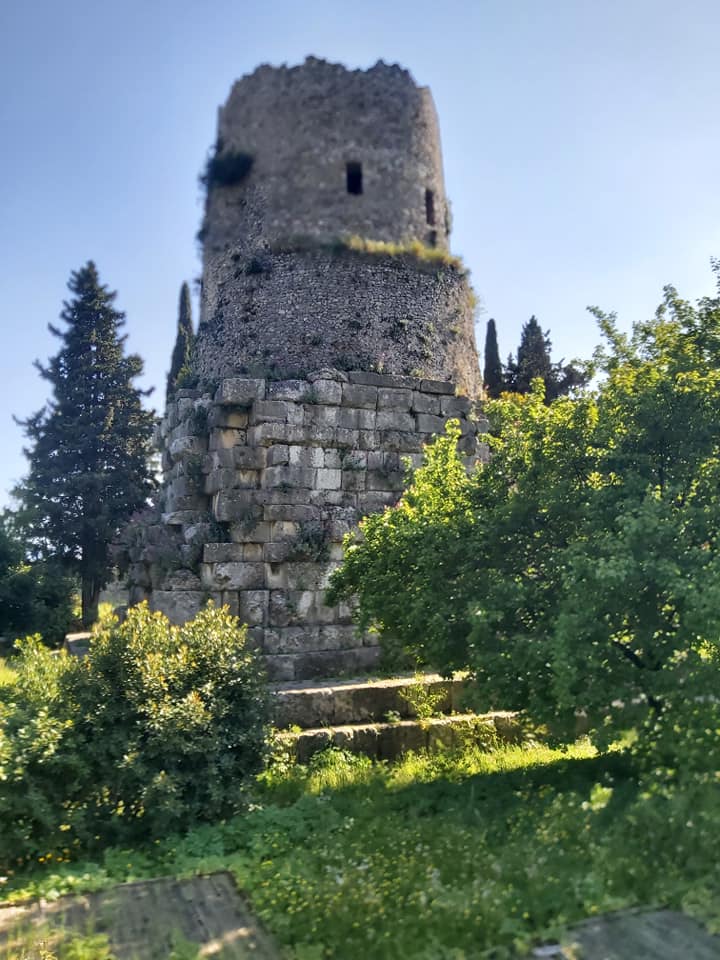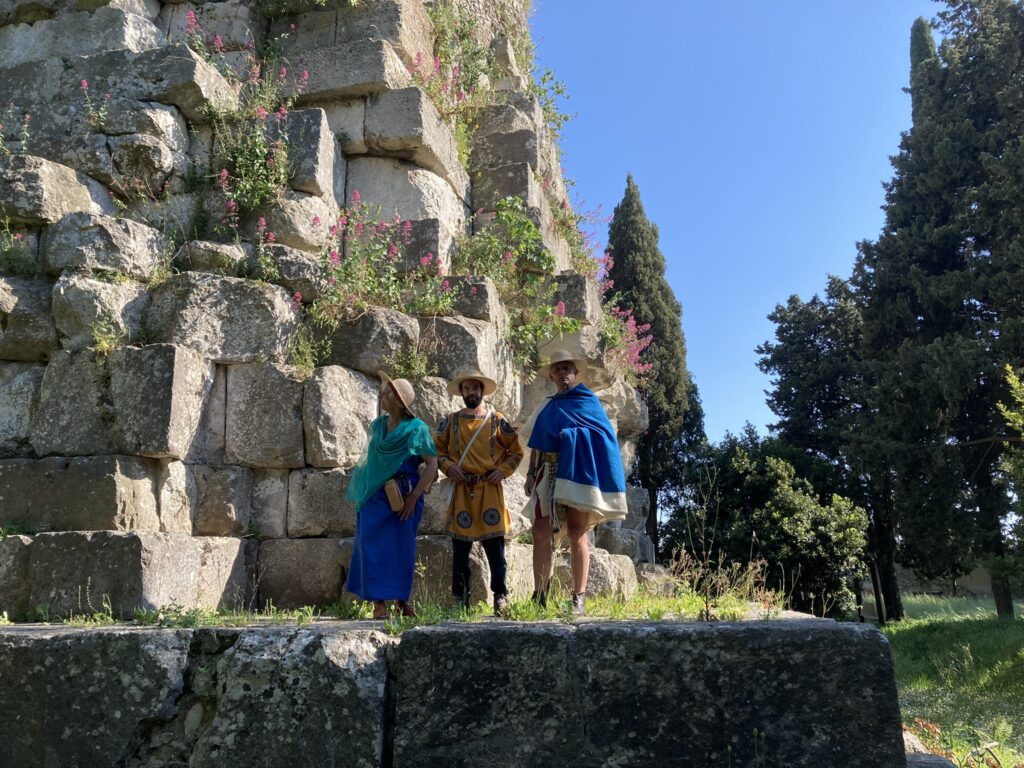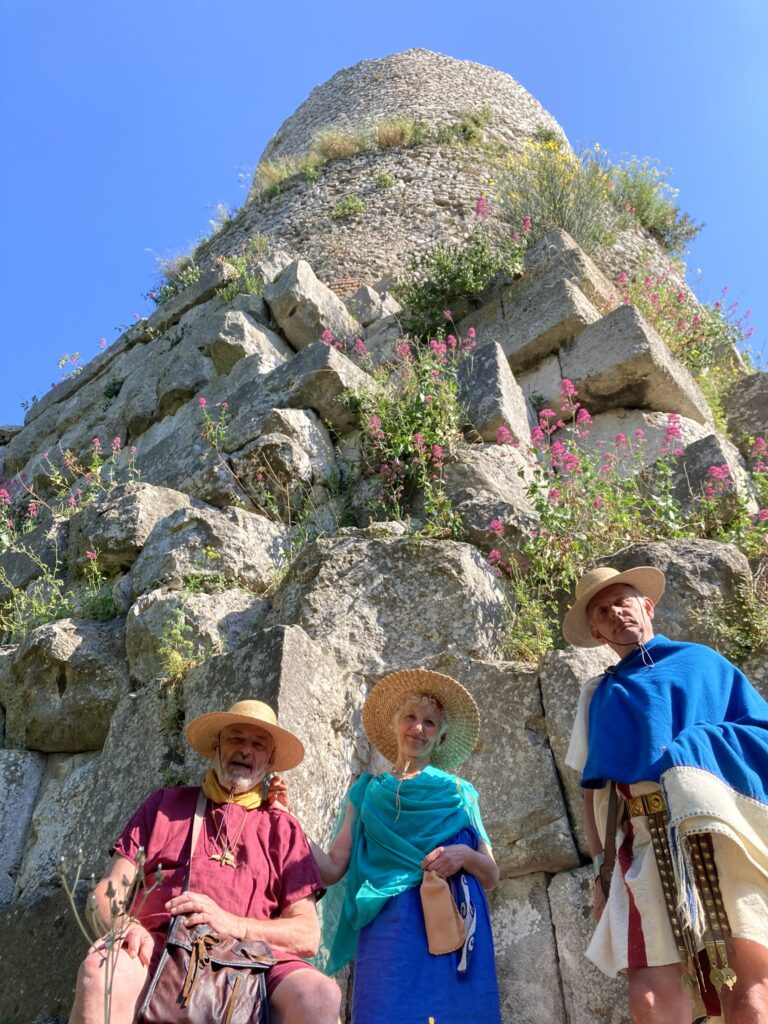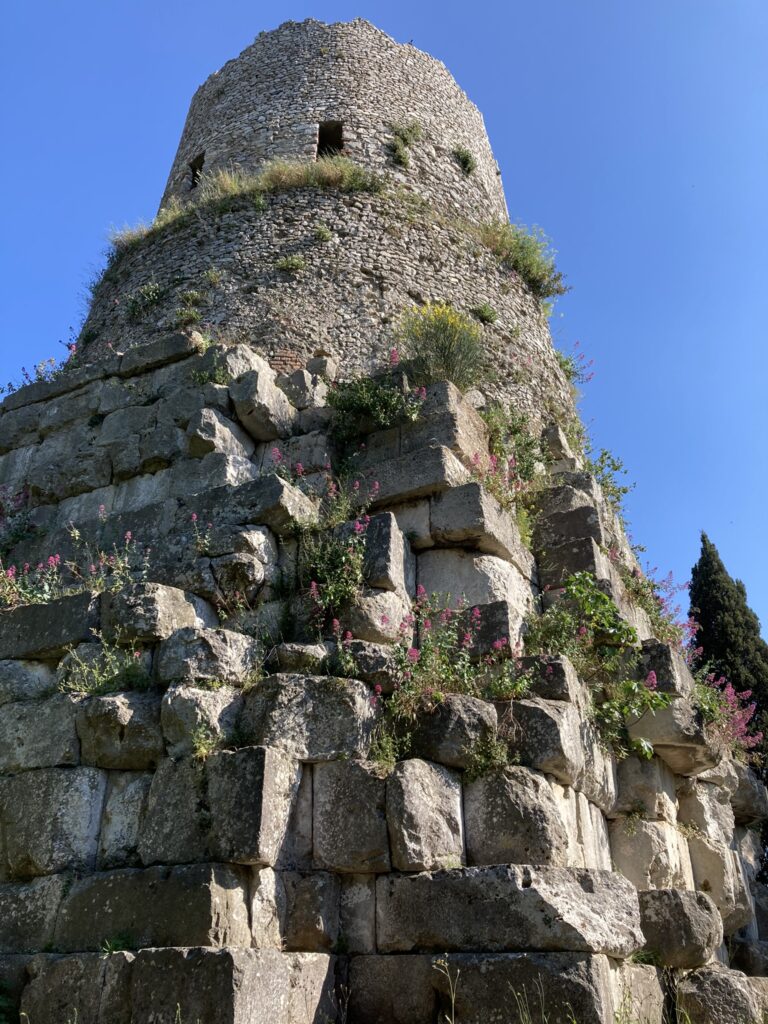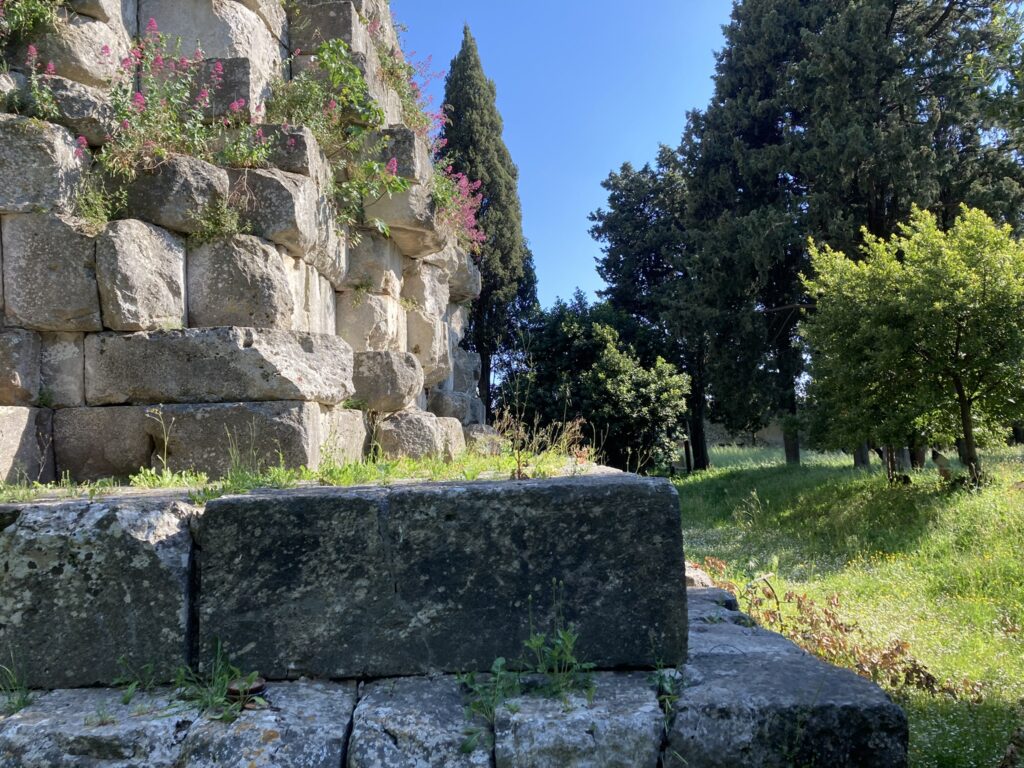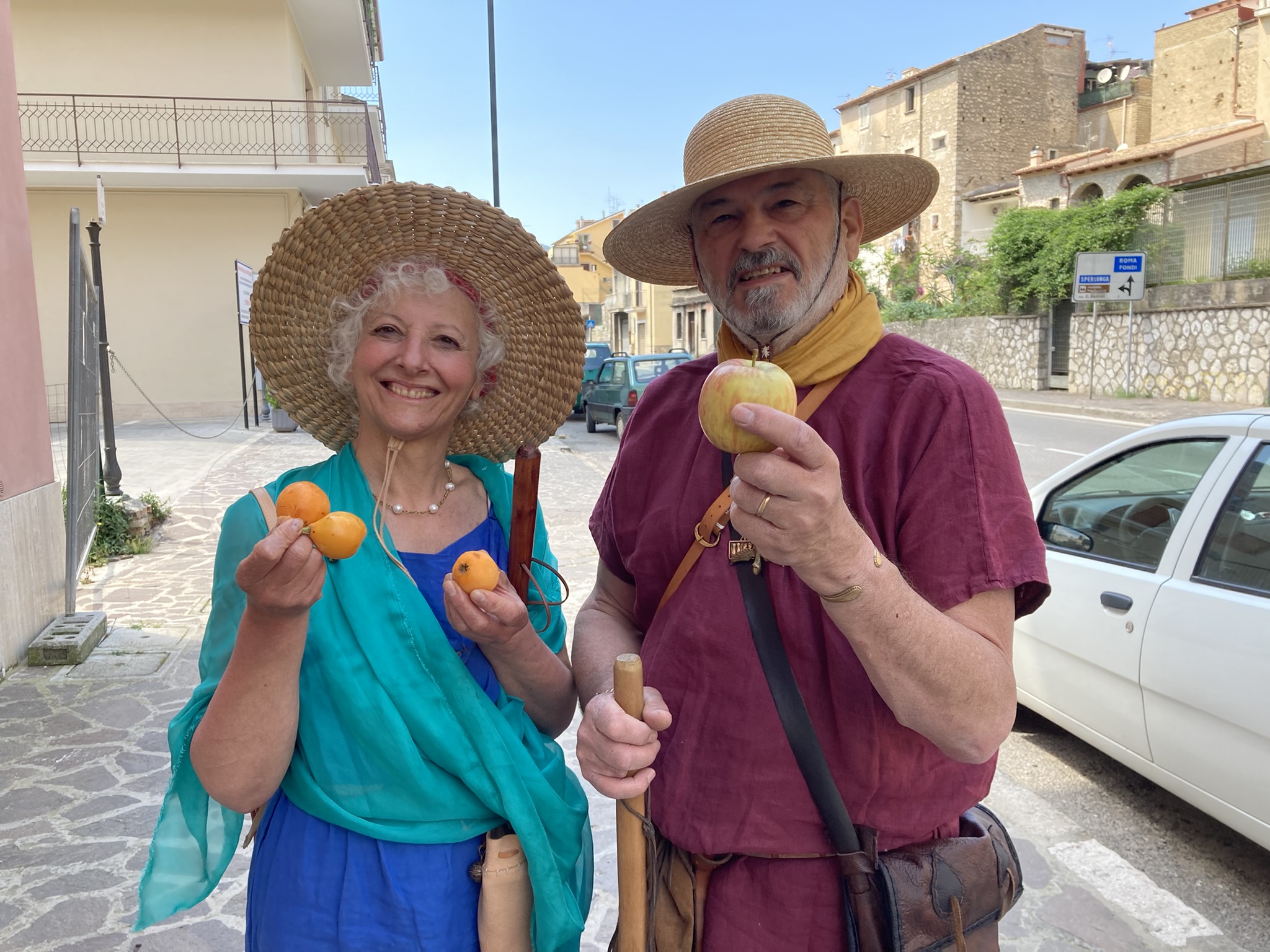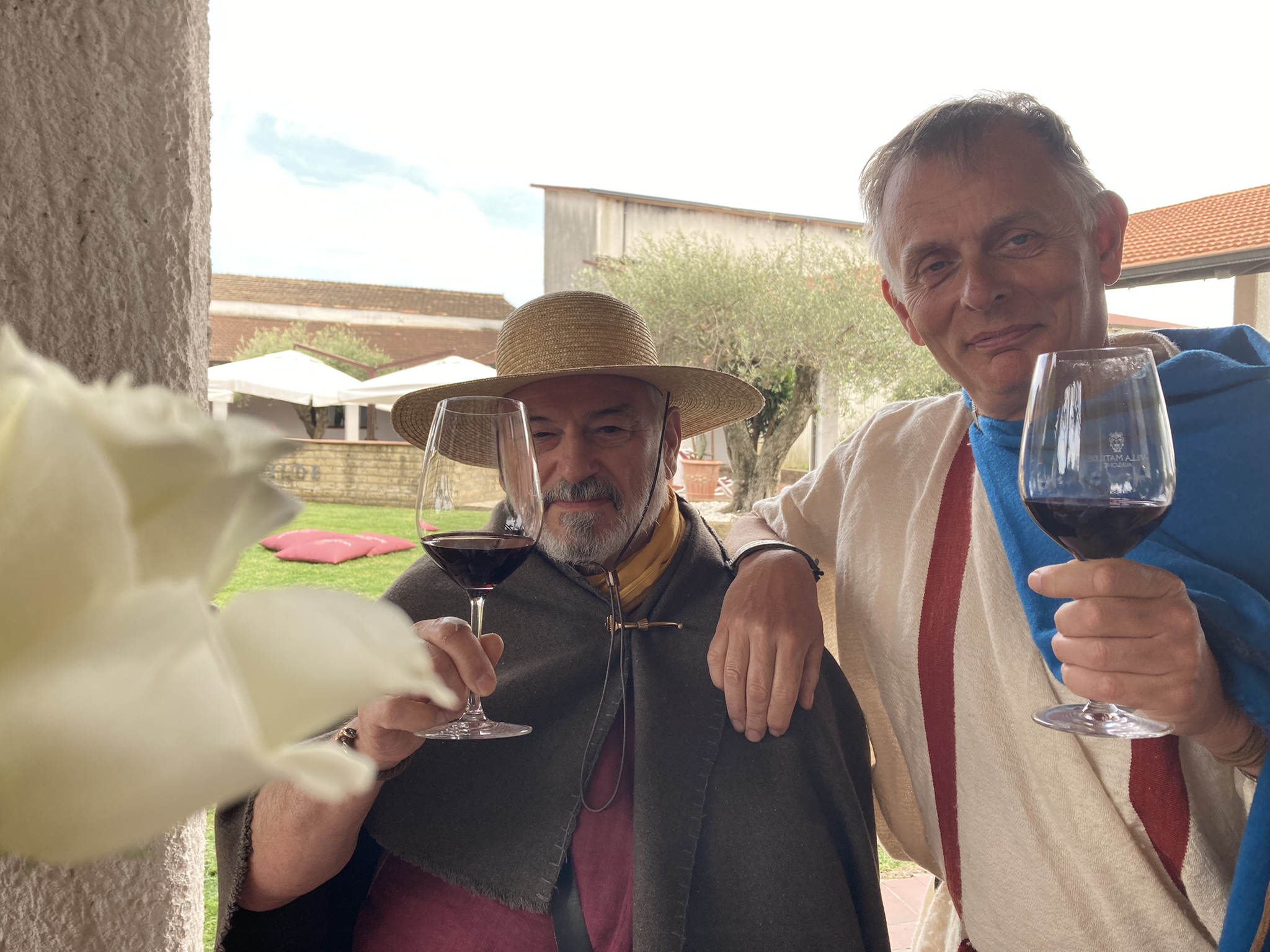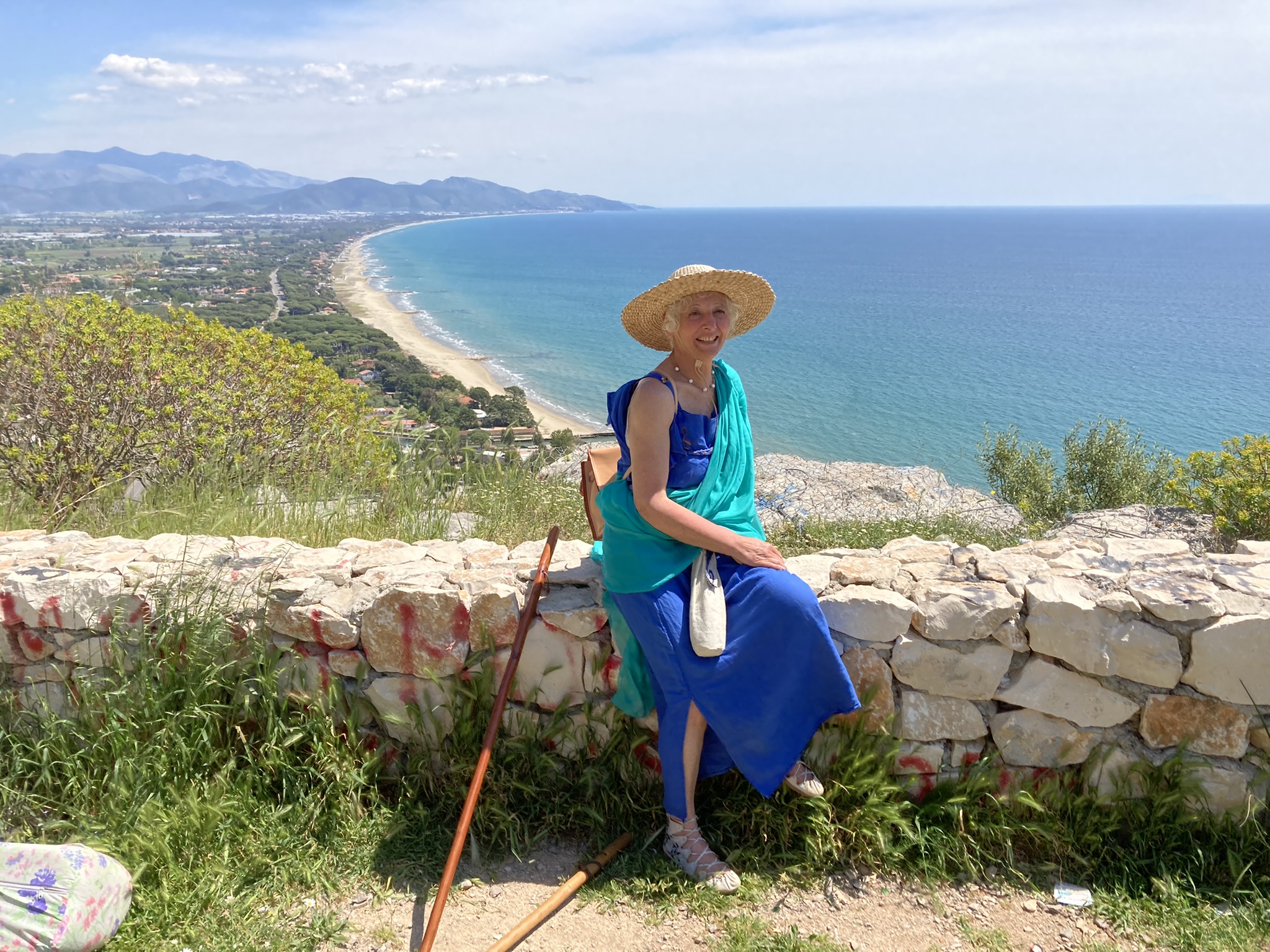I got up early to finish my report of the previous day and to start at a decent hour. The walkers were going to be Lucina, Erik and myself. Pedro was going to drive our van and meet us near the tomb of Cicero.
After the first 10 minutes of walking, we stopped at a coffee bar where we drew the attention of the nice ladies behind the counter. After listening to our story, they happily offered our coffees for free! Thank you again ladies of Pasticceria Andrea and Orazio!
Unfortunately, after we left the coffee bar we had to walk back to the B&B of the previous evening because Pedro reported there was something wrong with our van, after we solved the problem with the AdBlue and another issue more than an hour had passed and to make up for lost time we decided to drive straight to the start of the Appia Antica that runs through a mountain pass between Fondi and Itri.
This part of the Appia is largely the result of three phases of reconstruction. The large basalt stones were placed during the reign of Emperor Caracalla in 216. Much later, in 1568 Perafan de Ribera, the Viceroy of Naples, rebuilt the road with smaller volcanic stones and built the bridge that one crosses when approaching Fondi. Between 1767 and 1768, Ferdinand of Bourbon ordered additional restoration works for this main road into his kingdom, at the time, the town of Fondi was a border town between the Papal States and the Kingdom of the Two Sicily’s. One of the most interesting sites on this itinerary is the so-called Sant’Andrea Fort (Fortino di Sant’Andrea), which was built by Joachim Murat, king of Naples during the Napoleonic age, to prevent the Austrians from entering his kingdom through the Aurunci Mountains.
However, the history of the fort is much more ancient: the fort was built on the podium of a Roman temple to Apollo (the polygonal walls and the walls in opus incertum provide an indication as to how large this religious building truly was) dating perhaps back to the fourth century B.C.
In the sixth century a chapel to Saint Andrew was built on the ruins of the temple, whose structure would have been radically altered by the need to place the fort’s heavy artillery in the early 19th century. Before the time of Murat, however, the valley had witnessed a significant number of battles and warfare. Starting in the 1500s, the wars over the Kingdom of Naples and of the Two Sicily’s drew a significant number of Italian and foreign armies into this valley: Neapolitan, Papal, French, Spanish, Austrian and German armies all marched on the basalt stones of the Appia Antica. In 1734, the Austrian army fortified the valley to stop the Spanish troops of Charles of Bourbon. At the same time, the famous Briganti (highwaymen) took control of the Valley at different times, leading to constant reprisals and violence and playing a significant role in the conflicts over Southern Italy. During Masianello’s rebellion in Naples in 1647, highwaymen led by Papone and D’Arezzo of Itri blocked the mountain pass to halt the Spanish troops who had been sent to take the city back. Napoleon’s troops found a worthy enemy in the most famous highwayman of the region: Fra’ Diavolo (brother Devil). In 1798, serving as a Bourbon officer, he held the mountain pass with a small troop and slowed down the Napoleonic conquest of Southern Italy.
One of the disturbing things during our walk are the signs that indicate the Appia as the Via Francigena. Probably an overzealous civil servant managed to convince the local or central government that the via Appia (Rome to Brindisi) was part of the via Francigena a pilgrim’s route from Canterbury in the United Kingdom to Rome in Italy.
Now there are signs everywhere that indicate the Appia as the via Francigena, fortunately I do not have a battery-operated grinder with me because every time I see I get tempted to cut then down. We arrived at the other end of this beautiful naturalistic passage walking on the original Roman basalt pavement and the stones laid down by Perafan de Ribera and made our way walking on the modern national road to Itri.
At Itri Omar a very friendly greengrocer offered us free Medlar fruit (Nespole) and a tasty Fuji Apple and Erik treated us to a nice Ice cream at a local bar.
The walk towards the tomb of Cicero went smooth, no more original basalt stones, but a quite wide and smooth black top laid on top of the old Appia that made it easy to walk. Lots of photos of the tomb of the greatest orator, lawyer, politician and philosopher of republican Rome.
From Cicero’s tomb we took the Van to our B&B in at Formia where when we were ready to have dinner in a local trattoria disaster almost struck again. When I drove the van out through the opened electric fence of the parking lot of our B&B there was a tremendous bang that came from underneath the van. Super strange because I had driven in without any problems.
Everybody out!!!! I had already visions of another day lost and repairs at a local garage. After everybody was out I drove the van again over the entrance of the parking area, luckily no bang but a disturbing scraping sound. After I went down on my knees I could see that the exhaust was hanging down and touched the street. Got out the jack, jacked up the van and noticed that only the rubber suspension ring of the exhaust had only slipped of its bracket, 10 minute job, wash hand and of to dinner!!!
